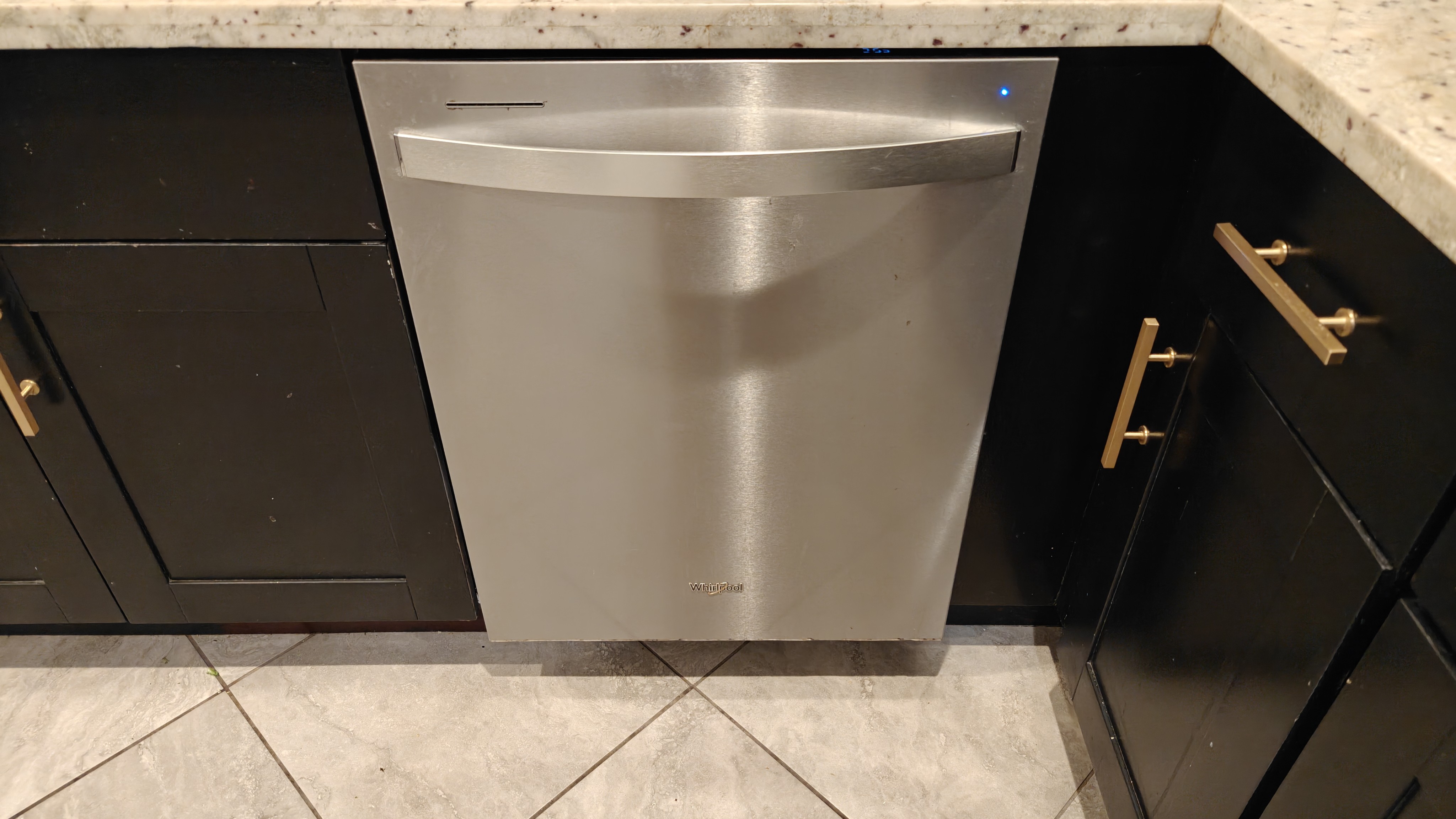How to clean an induction cooktop: banish baked-on dirt and grime for a sparkling finish
Induction hobs and stovetops are sleek and shiny additions to any kitchen—here's how to keep yours in tip-top condition.
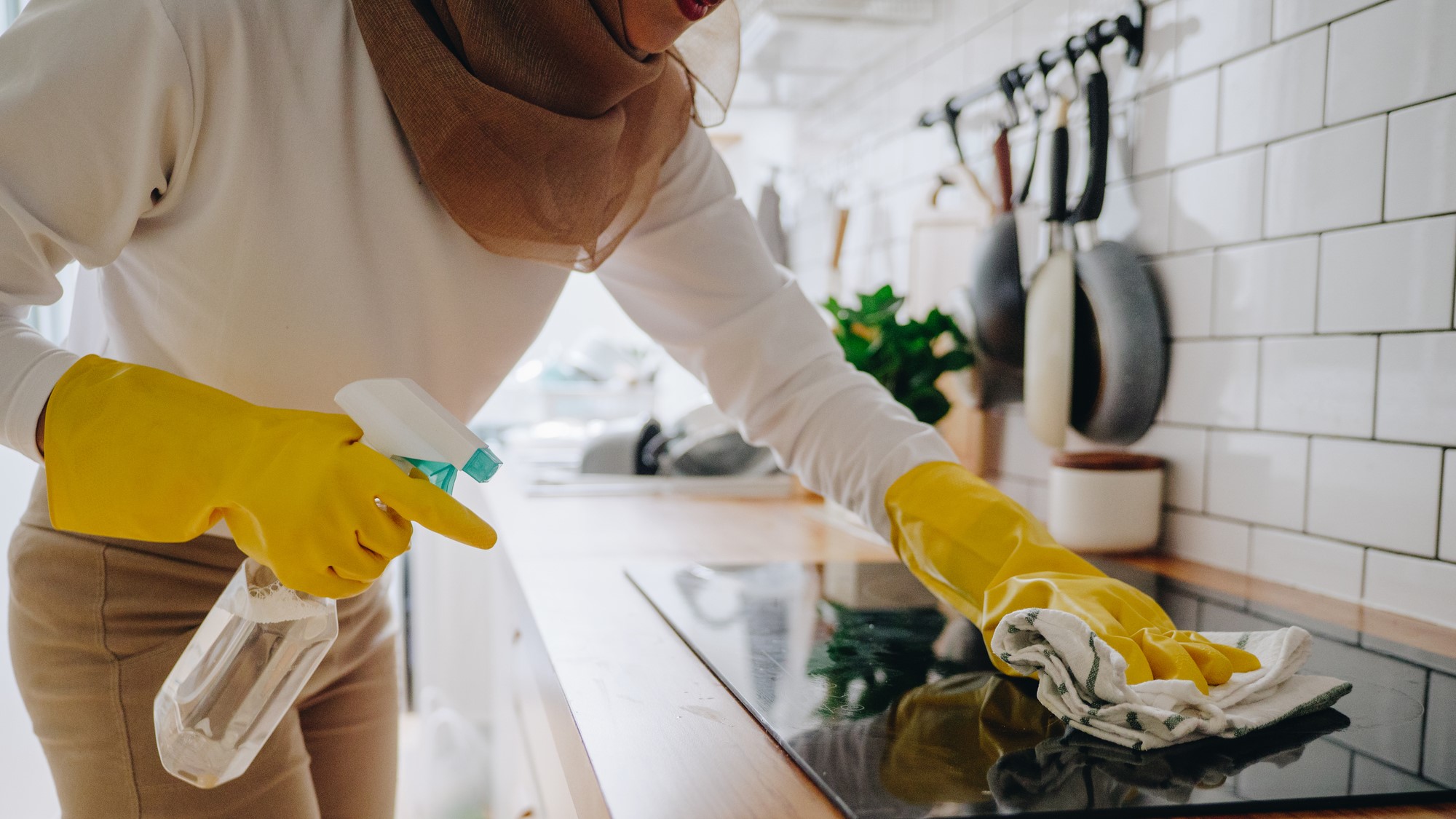
Microfiber cloths or non-abrasive sponge
Mild dish soap
White vinegar
Baking soda
Plastic scraper
Branded induction cooktop cleaner (optional)
The best induction cooktops are the last word in sleek and stylish kitchen cooktops, but their shiny, mirrored surfaces can soon become dull and grimy with use. Keeping on top of your cleaning can help you look as good as the day it was fitted and improve its performance.
We consulted a host of cleaning experts to create a step-by-step guide for cleaning your induction stovetop, from removing everyday grease and dirt to banishing tough, baked-on food stains without scouring and scratching that smooth glass surface.
How to clean an induction stovetop: quick steps
- Turn the power off and let your induction stovetop cool down
- Remove loose debris and crumbs
- Use a plastic scraper for burnt-on residue
- Wipe with mild soap and water or an induction stovetop cleaner
- Tackle stubborn stains with baking soda and vinegar
- Wipe again and buff for a streak-free finish
How to clean an induction stovetop: Step-by-step guide
1. Turn the power off and let your induction stovetop cool down
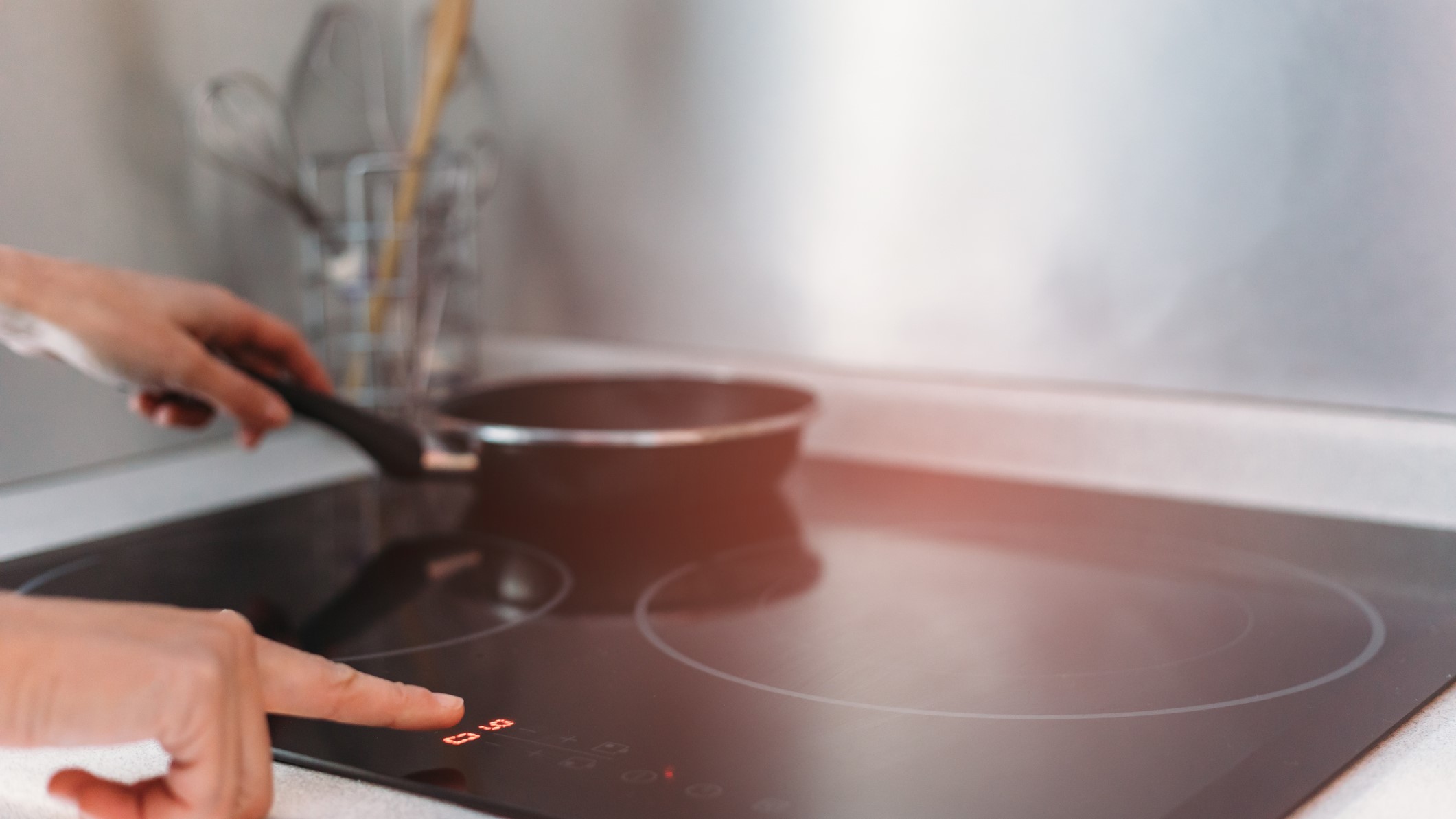
If you're cleaning your induction stovetop after cooking, turn it off and let it cool down fully. Induction hobs are designed to heat cookware directly, so while much of your induction stove will feel cool to the touch, any cooking zones you use will be hot.
Elizabeth Shields, operations manager at Super Cleaning Service Louisville, explains that cleaning a hot surface isn’t just unsafe; it can also damage your cooktop.
"You need to be careful with sudden temperature changes like spraying cleaning solution or even water on a hot surface," says Shields. "That kind of thing can cause thermal shock, making the glass crack or shatter. It's better to start cleaning from a surface that's not too hot. When the surface is lukewarm or cool, it's easier to eliminate stubborn spills and residues. They don't stick that firmly to the surface, and you don't have to put in much effort."

Elizabeth Shields is the Operations Manager at Super Cleaning Service Louisville, a professional cleaning company based in Louisville, Kentucky. Aside from being a manager, Elizabeth showcases her diverse expertise as an author of online articles. Her writing prowess spans across a wide array of subjects, from insightful parenting advice to enlightening pieces on home improvement, wellness, and the topic of sustainability.
2. Remove loose debris and crumbs from the surface
Starting with a debris-free surface ensures you don’t spread crumbs or grit, which could scratch the glass.
Using a dry microfiber cloth or a soft brush, gently sweep away crumbs and loose debris, paying particular attention to edges and corners where they might accumulate. Now, you can see any areas where you have burnt-on residue and need to apply a little more effort.
3. Use a plastic scraper for burnt-on residue
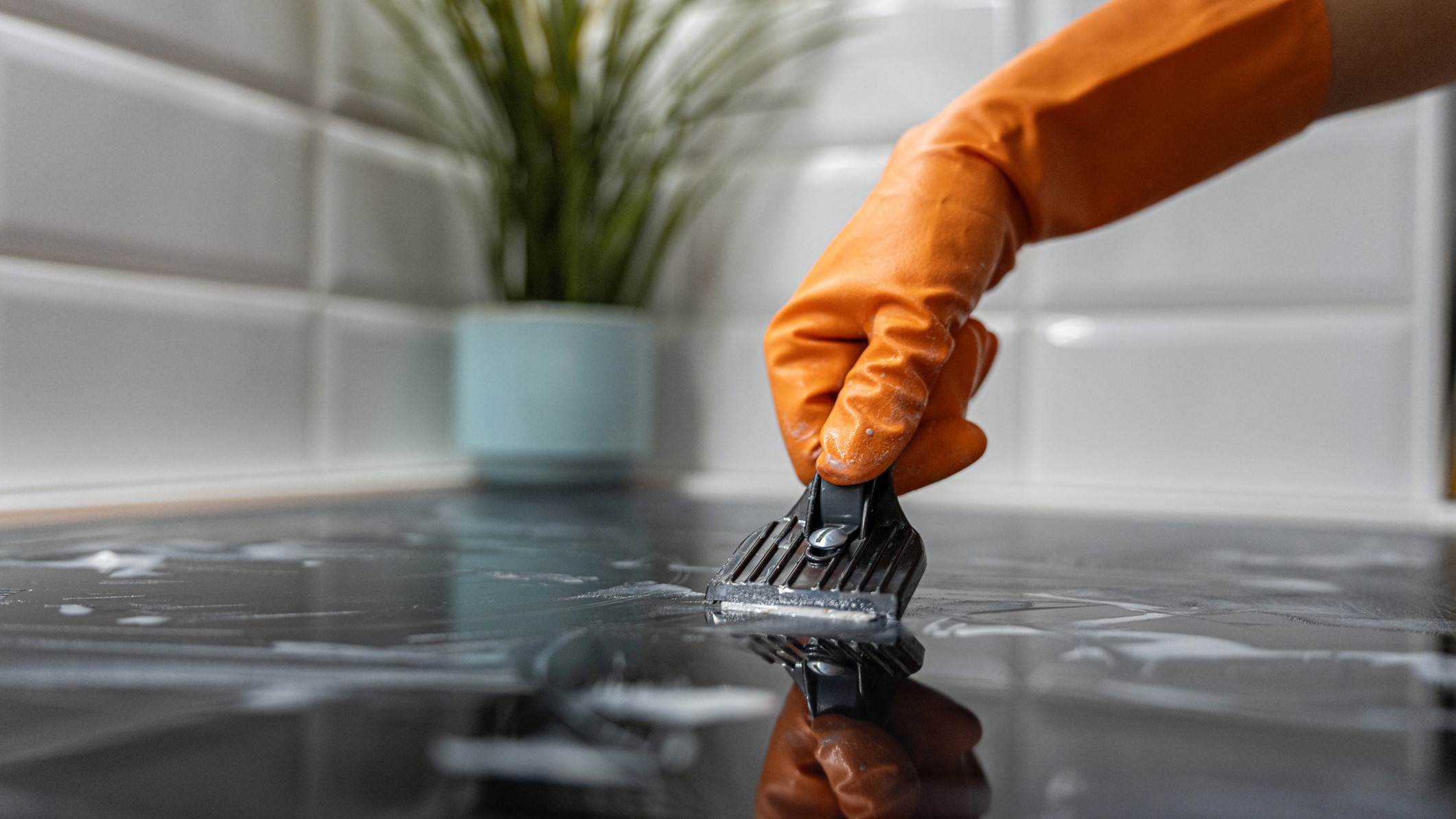
Ken Doty, cleaning expert at The Maids, swears by his plastic scraper for removing stubborn, burnt-on residue that won't come off with a cloth.
"For tough-to-remove burnt food residue, your plastic scraper can help," says Doty. "Gently apply pressure beneath the edge of the cooked food and scrape upwards at a 30-degree angle for best results."
While you can use a kitchen tool you already have, such as a plastic spatula, it may be worth investing a few dollars in an induction hob scraper (such as this 3-Pack Plastic Razor Blades Scraper Tool for $4.99), specifically designed to be tough on stubborn dirt but gentle on the induction stovetop glass. You can also use these handy tools around the home for other tasks, such as removing putty, stickers, decals, and labels.
After scraping, wipe the area with a damp cloth to remove any leftover debris.

Ken Doty joined The Maids International in July 2013 as Vice President of Business Intelligence and was promoted to Chief Information Officer in February 2020. He is experienced in business intelligence with over 20 years of experience in consulting and information technology. He loves talking shop with other cleaning service professionals, and offering cleaning tips to anyone who asks!
4. Wipe with mild soap and water or an induction stovetop cleaner
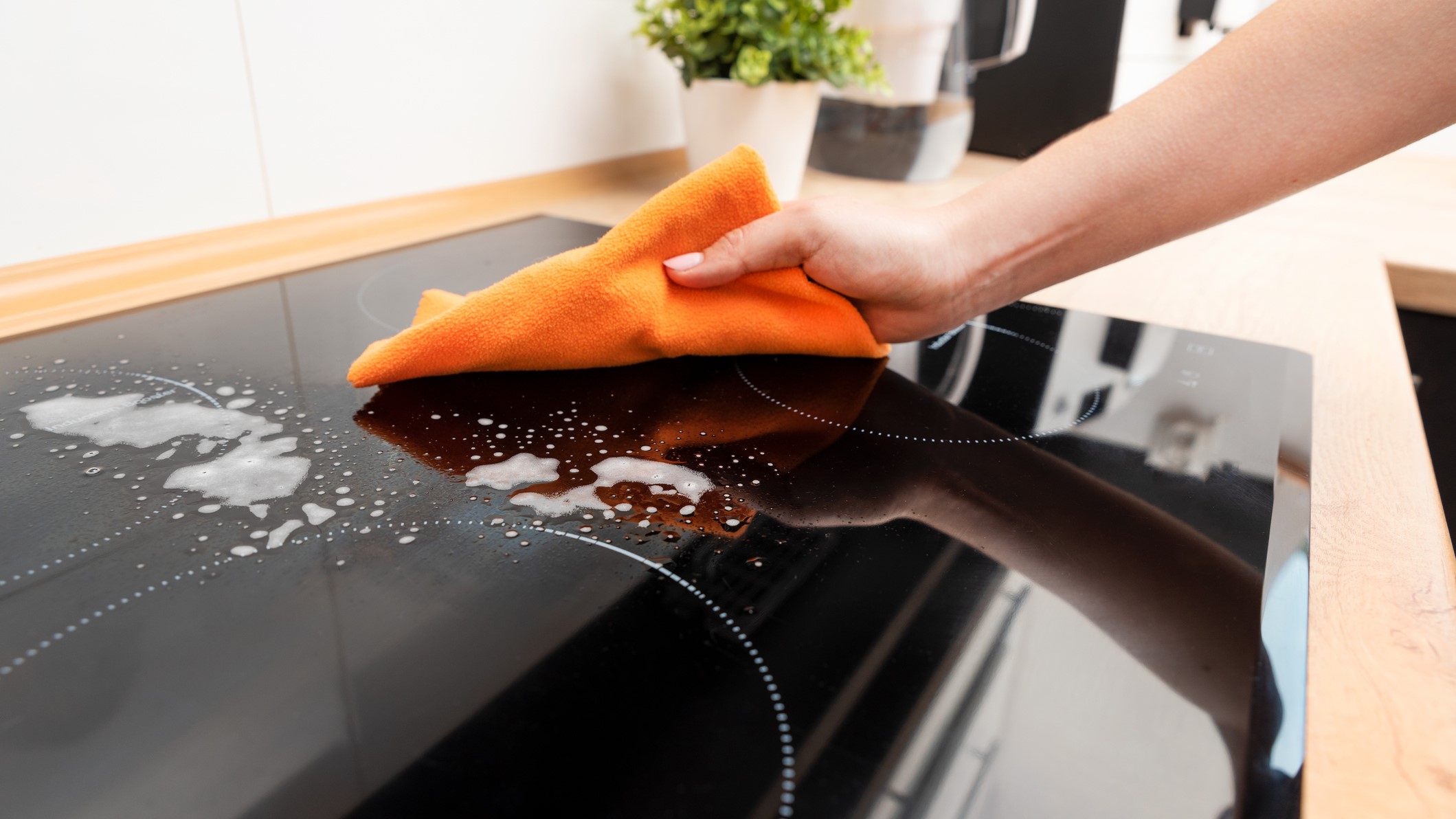
Mild dish soap is a simple yet highly effective way to tackle common spills and smudges without causing damage. Mix a few drops of dish soap with warm water and apply the solution to the surface.
Alternatively, you may prefer to use a cleaning solution developed specifically for induction cooktops, such as Weiman Cooktop and Stove Top Cleaner Kit - $19.98 for a pack of two. But whichever type of cleaning solution you opt for, "use a microfiber cloth to spread the cleaner evenly across the cooktop and let it sit for 10 minutes," advises Doty, for a more thorough clean.
5. Tackle stubborn stains with baking soda and vinegar
Is there nothing baking soda and vinegar can't clean? This hard-working pairing creates a gentle, natural abrasive that lifts stubborn stains without damaging the glass surface.
Courtney Cole, interior designer with tile and home renovation company TileCloud, enjoys this natural cleaning method. She advises sprinkling baking soda over the stain, adding a few drops of white vinegar, and letting the mixture sit for several minutes. "After this, wipe it away with a soft cloth to avoid scratching the surface. Then, you can finish everything off by rinsing it with a damp cloth," suggests Cole.

As an interior designer at TileCloud and sister company Yabby, Courtney brings a wealth of knowledge and expertise to the world of home renovation. With a Diploma in Interior Design and Decoration and a passion for creating stunning interiors, she's dedicated to helping people on their journey to transform their homes. Currently channeling her expertise into renovating her own home, she aims to share valuable insights, tips, and inspiration to assist others in achieving their dream space!
6. Wipe again and buff for a streak-free finish
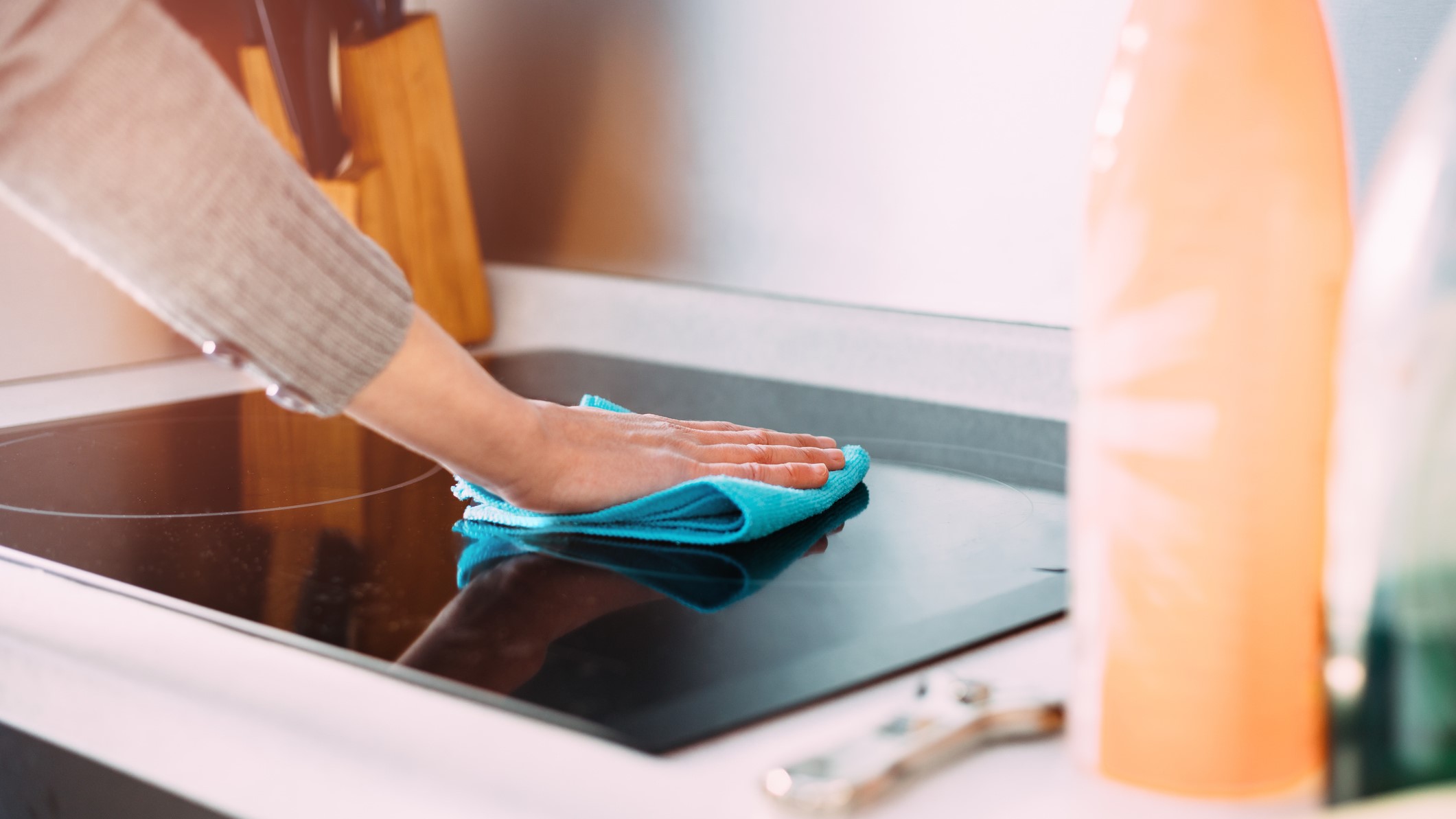
It's time to wipe down the cooktop with a clean, damp microfiber cloth to remove any remaining cleaning solution. Once the surface is residue-free, take a dry microfiber cloth and gently buff the cooktop using circular motions.
This quick extra step enhances the shine of your induction stovetop and prevents water spots or streaks from forming.
For an extra polished look, you can use a dedicated glass cooktop cleaner. Apply a small amount and buff it in for a brilliant, reflective finish.
How to clean an induction stovetop: FAQs
How can I avoid scratching or dulling my induction stovetop during cleaning?
Choosing the right materials and methods is essential to avoid scratching or dulling your induction stovetop during cleaning. Cole recommends avoiding "abrasive materials" such as steel wool, harsh scrubbers, sharp objects, and harsh chemical cleaners.
Don't use chemicals such as bleach or ammonia-based products, which can degrade the finish over time and pose health risks. Instead, use soft microfiber cloths and non-abrasive sponges to clean the surface gently. For stubborn stains, baking soda and white vinegar can be safely applied without causing damage.
Shields also recommends wiping away any spills immediately if you can. "Cleaning up right away is way easier than waiting", she explains. "If you get to a spill while it's still fresh, you won't have to work as hard to clean it up. But if you let it sit there for too long, it'll be much tougher to get rid of. If you want to clean up a small spill, the easiest way is to grab some paper towels."
Can I clean an induction hob with my usual window cleaner?
Avoid using window cleaner on an induction hob. Many window cleaners contain ammonia, which can damage the glass surface over time and dull the glossy finish.
Instead, use mild dish soap and warm water for everyday cleaning or a dedicated glass cooktop cleaner for a streak-free shine. This ensures your hob stays in top condition without risking damage from harsh chemicals.
Sign up to receive the latest news, reviews, buying guides and deals direct to your inbox
What can damage an induction hob?
An induction hob can be damaged in several ways, so it's important to handle it carefully to ensure it lasts. One of the most common causes of damage is using harsh or abrasive cleaning materials, such as scouring pads, steel wool, or caustic chemicals. These can scratch or dull the smooth glass surface, leaving permanent marks.
Dropping heavy or hard objects onto the cooktop can also cause cracks or chips in the glass. Dragging cookware with grit or dirt on its base can also cause scratches, so always lift your cookware off the stove instead.
Another issue is using cookware that isn't compatible with induction hobs, leading to inefficient cooking and possible damage to the surface over time.
Reviews
Whirlpool 24" Stainless Steel AI Dishwasher Review
Napoleon TravelQ PRO285 Portable Gas Grill review
Dreame L40 Ultra Robot Vacuum Cleaner and Mop review: almost hands-free cleaning
GE Profile Smart Mixer with Auto Sense review: a powerful, thorough mixer
Echo eForce DPB-2500 review: a leaf blower as a snow removal tool?
DPAS-2100 + Pro Paddle Attachment review: a new way to remove snow this winter?
Midea MAD53109APK 5.5QT Air Fryer review: a small, simple, and highly effective option
Eureka J15 Pro Ultra Robot Vacuum review: hands-free cleaning for busy families
Sugary spills on the cooktop are another hazard. Once sugar caramelizes, it becomes difficult to remove and can cause permanent stains or damage if left untreated. Swiftly cleaning up any spills, maintaining regular cleaning, and using the right cookware can help protect your induction hob and keep it looking shiny and scratch-free for years.
Final thoughts
Cleaning your induction hob doesn’t need to be difficult or time-consuming; with the right approach, it will continue to look sleek and shiny. Wiping down spills immediately, removing crumbs with a microfiber cloth, and using mild dish soap or an induction stovetop cleaner will help keep your cooktop in top condition.
Avoiding harsh chemicals, abrasive pads, and heavy cookware will also protect the stovetop's surface from scratches and permanent damage.

Joanne Lewsley is a reputable freelance writer specializing in evidence-based health and lifestyle content. With a background in journalism and extensive experience working for known brands, Joanne rigorously tests and evaluates home gadgets. Her passion for writing is complemented by her love for the outdoors and live music.
